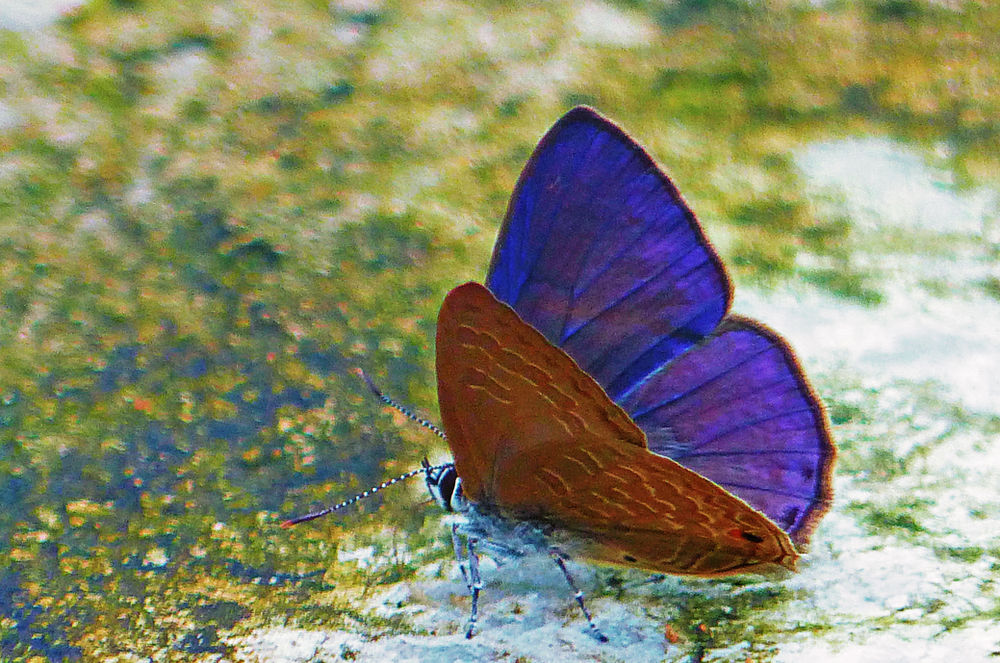top of page
Butterfly populations are a very good indicator of the health of an area's ecosystem !!
Also known as the Common Ciliate Blue.
Anthene emolus is a small butterfly of the Lycaenldae (Blues) family that is found in India and parts of South East Asia.
They are essentially an urban butterfly but can also be found in forested areas.
Adults have a rapid and erratic flight but will fly short distances if not unduly alarmed.
Males are often encountered puddling (taking nutrients) on damp footpaths, and are also partial to human perspiration.
Caterpillars of the Ciliate Blue invariably appear in the company of Weaver ants (primary worker ants). The attending ants are attracted to the Lycaenid larvae by the carbohydrate rich secretions released by the caterpillar, and the ant's presence offers protection to the caterpillar from parasitoids and predators.
Males area deep purple blue on the dorsal side while the female is a dull brown.
The hindwing possesses a few very fine tails which are an extension of the cilia.
The ventral wing side is an earthy grey and there are white edged bands.
On the hindwing, there is an orange crowned black spot.

Diet: caterpillars feed on Nephelium litchi, Cassia fistula, and Heynea trijuga leaves.
Family: Lycaenidae
The single biggest threat to butterfly survival is habitat destruction!!
bottom of page



